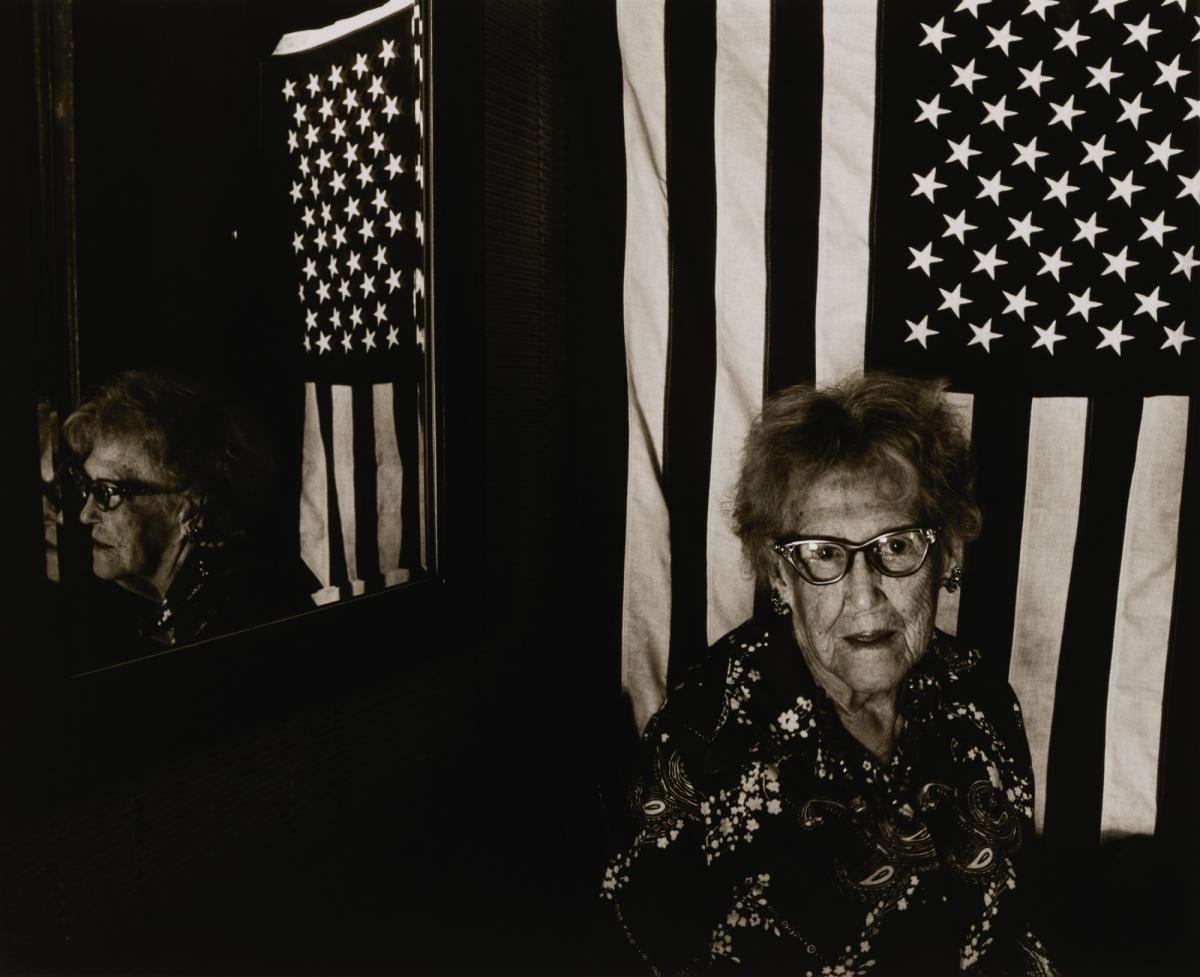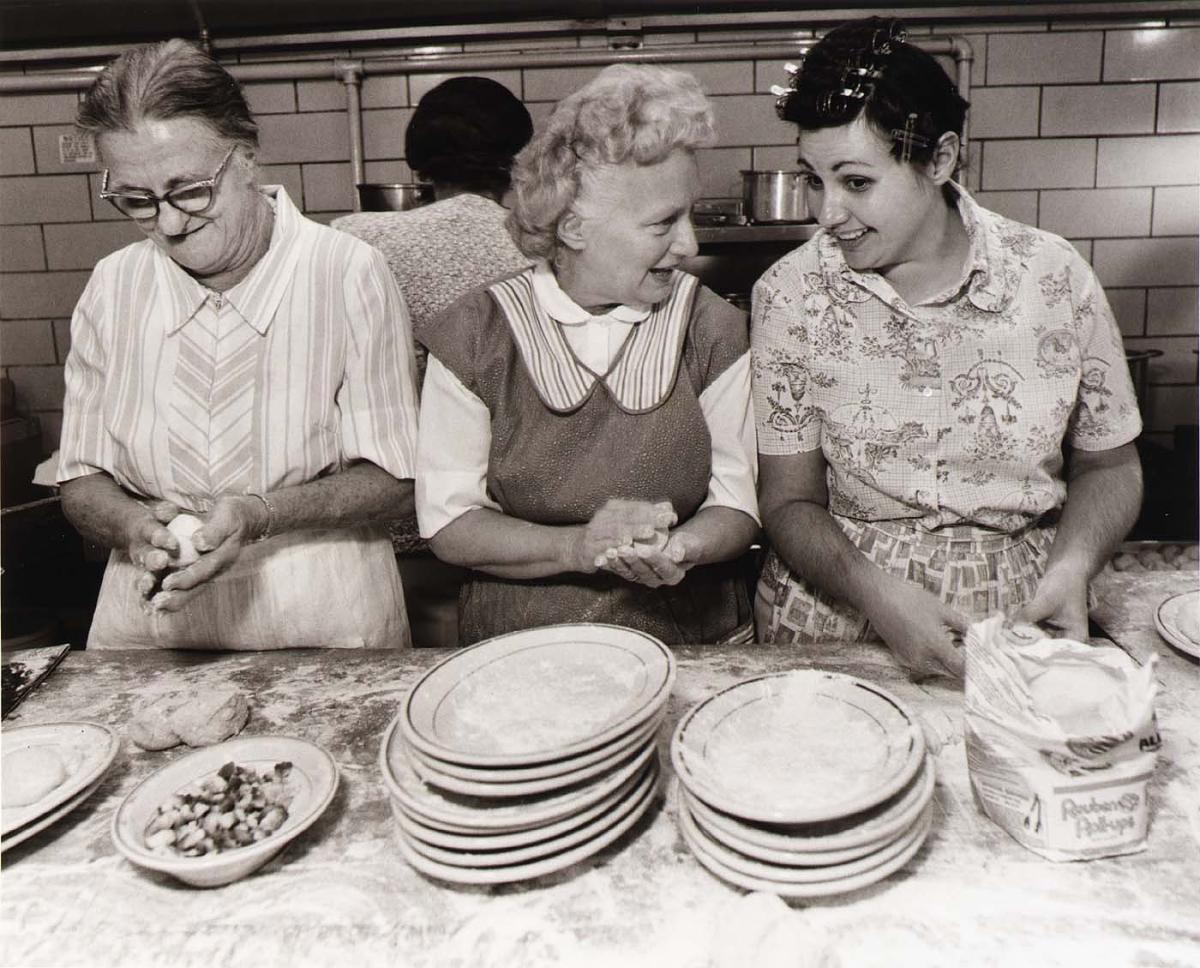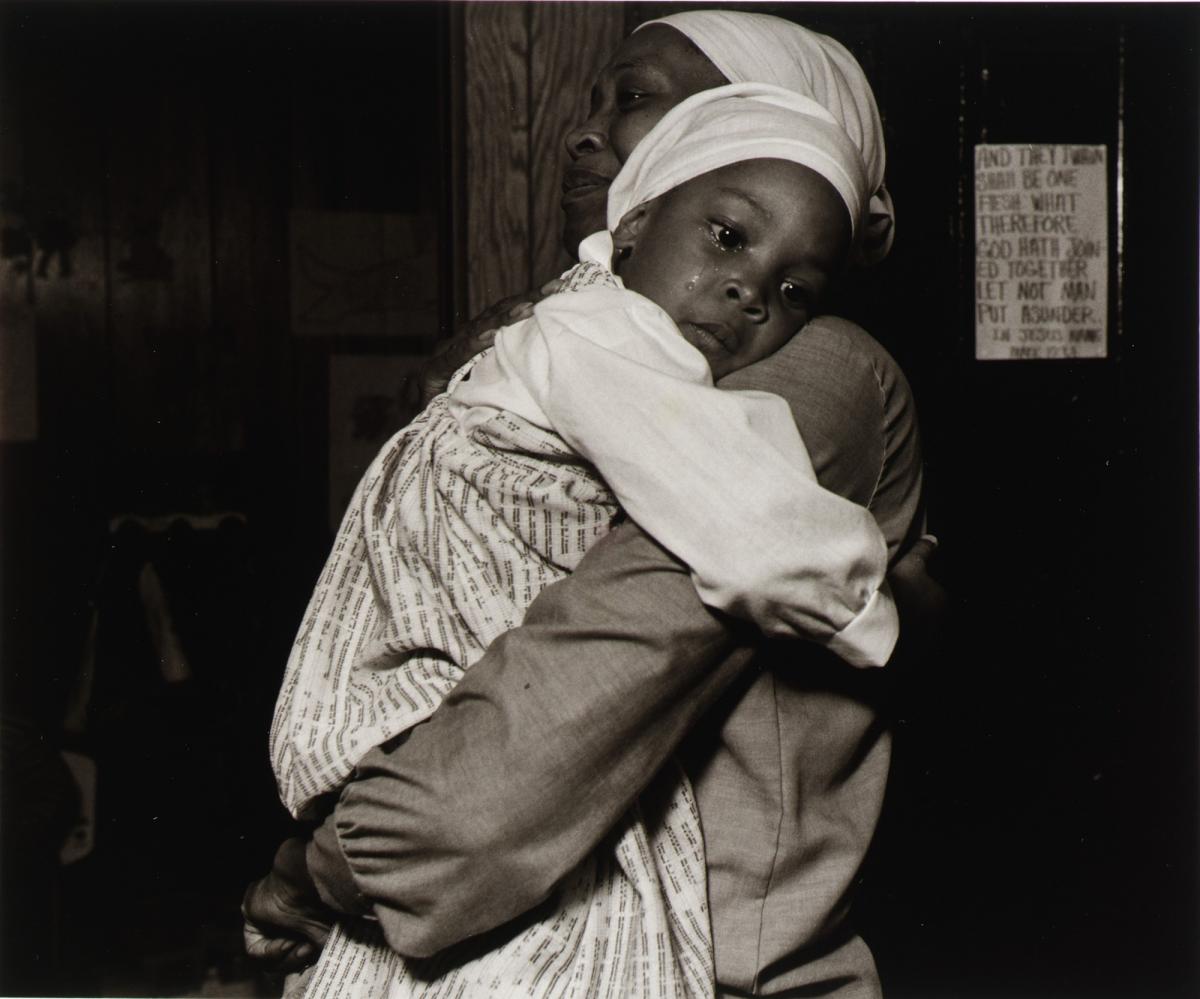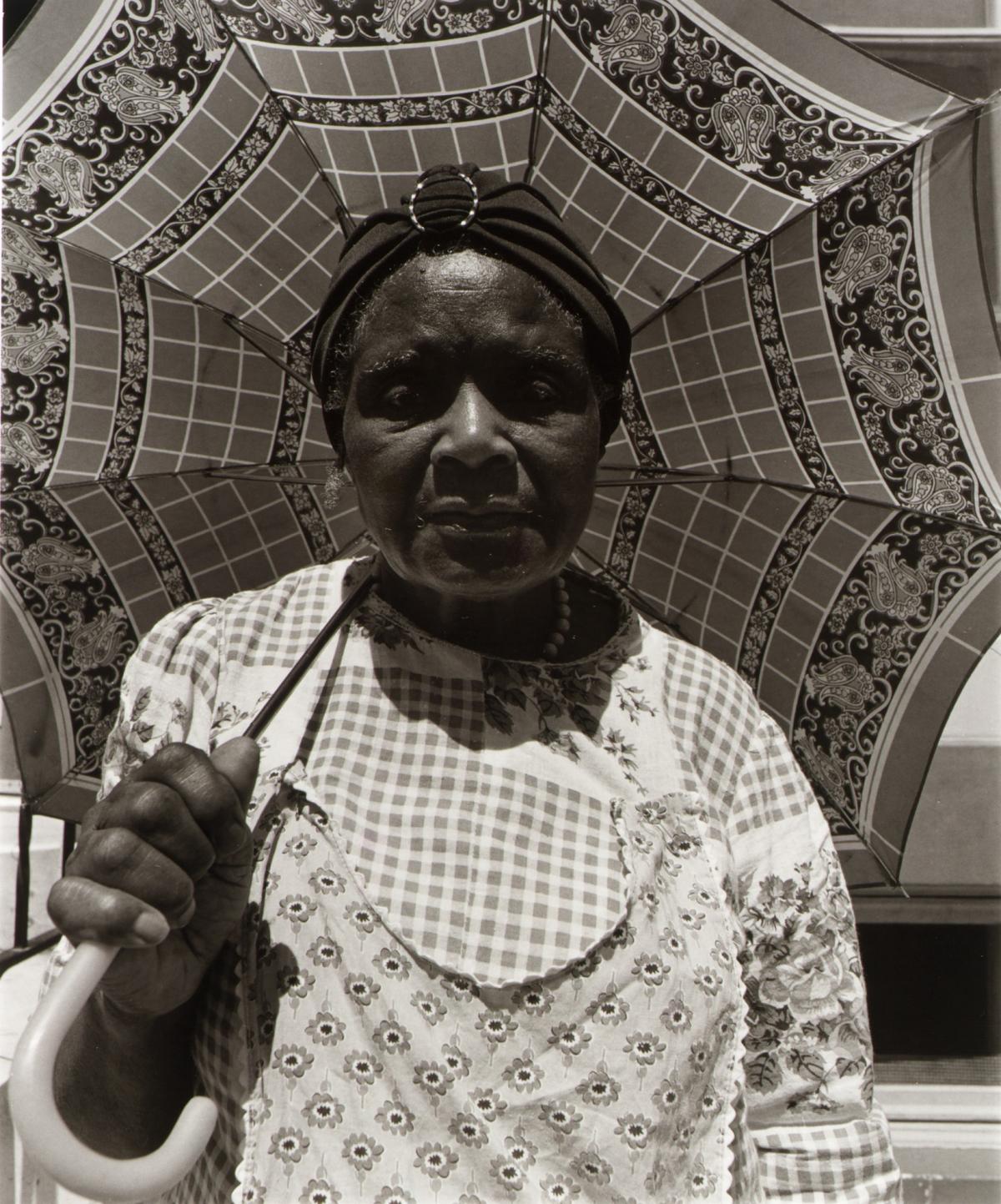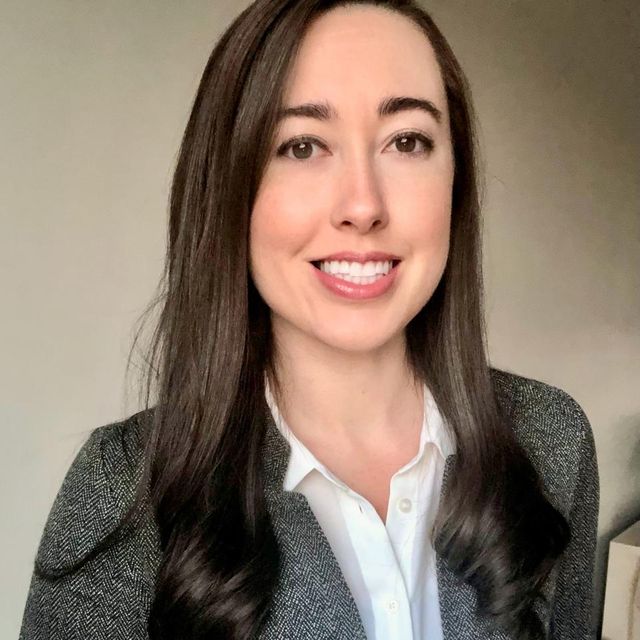
In the late-1970s, American photographer, curator and teacher, Linda G. Rich embarked on a multi-year project to create a documentary survey of East Baltimore’s neighborhoods, working in collaboration with her students Elinor Cahn and Joan Clark Netherwood. Supported by a grant from the National Endowment for the Arts, these women made more than 10,000 exposures, wrote and published a catalogue, transcribed hundreds of interviews with residents, and held exhibitions across the Baltimore-area. Last year, a selection of prints from the survey were on view for the first time at SAAM in the exhibition Welcome Home: A Portrait of East Baltimore, 1975-1980.
Among those prints was Rich’s striking portrait of Virginia Elizabeth Jensen, who lived in a row house on South Linwood Ave in the heart of East Baltimore for over 50 years. Born on April 1, 1885, Jensen was an outspoken suffragette who campaigned for women’s right to vote and worked for Maryland’s Democratic National Committee for over twenty years.
On her 90th birthday, Jensen was presented an American flag by then-city councilwoman and future U.S. congresswoman and senator, Barbara Mikulski. Born and raised in the Fells Point neighborhood, Senator Mikulski earned the distinction of being the longest serving woman in the history of the U.S. Congress. In another photograph titled Barbara Mikulski Fundraiser, Elinor Cahn captured a joyful moment during one of Mikulski’s campaign fundraisers.
Seeking to document the spirit and resiliency of East Baltimore, Linda Rich met with and photographed women in their homes and at work and in churches. She was invited to attend graduations, baptisms, weddings, and funerals. In one photo, Rich depicts a cheerful group of women preparing the annual sauerbraten and dumplings dinner at a church in Canton. Surrounded by a blanket of white flour, the women are shown engaged in a spirited conversation while shaping the potato dumplings for the traditional German dish.
In another portrait, Rich captures a tender moment between a mother and her crying daughter during a church service. Cradling the young girl in her arms, the mother holds her daughter in a comforting embrace. The photographers introduced themselves to local clergy, who invited them to community events and celebrations. “In a community with such a strong religious identity, an introduction by a neighborhood religious leader meant easier acceptance of us by parishioners,” Rich noted.
In her application to the National Endowment for the Arts for support, Rich wrote, “The photographs will document the strength and pride of the people of the East Baltimore neighborhoods.” During the recession of the mid-1970s, many residents faced new hardships and changes, including the decline and deterioration of their neighborhoods. Fighting to save their homes, neighbors joined together to support local businesses, fight for education and health reform, and demand help from city government and financial institutions. Rich, Cahn, and Netherwood met with and interviewed many women who played a vital role in these efforts, documenting their lives and listening to their stories.
Rich also captures moments of working life in the neighborhood, such as the photograph of a woman at work behind a bar in an Irish Pub in Highlandtown. Taken on St. Patrick’s Day, Rich captured her subject in a moment of rest from serving the bar’s boozy patrons. Many Irish immigrants settled in Baltimore during the Great Famine in the mid-1800s, and the Highlandtown neighborhood is home to a large Irish American community.
After her work on the East Baltimore Survey, Rich moved to California and helped to establish the Hollywood Photographers Archives in Los Angeles. In 1988, she co-edited a book from that project, titled Masters of Starlight: Photographers in Hollywood, with David Fahey. Her photographs are held in collections across the country, including the Minneapolis Institute of Art, Art Institute of Chicago, and the Library of Congress.














